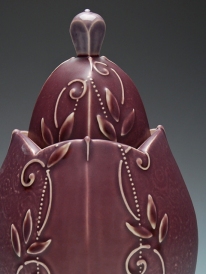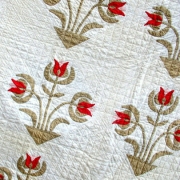In July, I finally read Alexander McQueen: Savage Beauty after buying the catalogue from his extraordinary, haunting, gorgeous, and (very unfortunately) posthumous exhibition at the Metropolitan Museum of Art in the summer of 2011, which I was lucky enough to see in person.
Somehow, I can’t remember where I first saw a piece by this amazing fashion designer and couturier, but I do know I immediately fell in love with his imaginings. His work readily embodies Victorian modern style and “ornamented strength” for me (phrases I use and aspire to in my own work). So, I decided to create an homage stamp to pay respect to Lee McQueen in the form of a skull, a long-time motif associated with his work.
I drew a skull, but it felt too stark. So me being me, I was compelled to add ornamentation and then a bit of a smile, both of which kind of automatically yielded a Day of the Dead sugar skull. I was so excited with the ‘guy skull’ stamp (pictured top), that I made a ‘gal skull’ too (pictured bottom), delighted to embrace the sugar skull tradition, which is fittingly about honoring the deceased.
The skull-stamped mugs recently debuted at my studio sale and online shop here. If skulls strike your fancy (Día de Muertos, Halloween, McQueen, or otherwise), I will be adding more of these spirited cups in very limited quantities (guys, gals, and combo) in other colors in early December.
“You’ve got to know the rules to break them.
That’s what I’m here for, to demolish the rules but
to keep the tradition.” ~ Lee Alexander McQueen, 1969-2010














































![[Micro] quilting [Micro] quilting](https://kiefferceramics.files.wordpress.com/2013/05/micro-quilting.jpeg?w=180&h=180)






























































